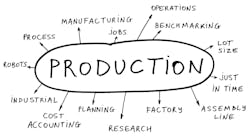Hybrid twins: Antidote to the post-pandemic product recall crisis?
In early 2023, Keysight predicted that recalls would increase steadily between 2023 and 2026 as product developers rushed to fill supply chain gaps. Sedgwick’s 2024 State of the Nation Recall Index report proved this prediction is coming true, with recalls reaching a seven-year high in 2023, up 11% over already high 2022 levels.
New recall announcements in the first quarter of 2024 highlight an alarming number of product failures, from the airline industry rocked by a series of incidents to design and maintenance concerns with electric vehicles.
See also: Unleashing the potential of digital twin technology
This is happening for several reasons, the largest of which are due to the convergence of multiple technologies, each with its own feature evolution and supply chain issues, coming together into a single product. In physics, this is known as multidimensional acceleration, where the rate of change accelerates across multiple aspects simultaneously.
In product development, OEMs for larger things like automobile and aircraft manufacturers rely on suppliers to deliver pre-integrated, often preassembled subsystems. These integrated subsystems are notoriously difficult to assess from a quality and reliability standpoint using noninvasive quality assurance methods.
Hybrid twin simulation
As more technology gets embedded, intertwined or downright crammed into smaller spaces, the ability to inspect inside integrated systems—whether electronic subassemblies, mechanical subassemblies, or software modules—means the difference between system-level reliability and mass recalls. The compatibility and inter-reliance matrix between subassemblies becomes so complex, so rapidly, that digital twins of the electronic, mechanical, and even software systems are shifting from a convenience to a necessity.
A digital twin is a replica of a physical system created from combinations of engineering science, physics, and computer science models. Creating connections between multiple digital twins with correction factors that enable them to stay true to their physical system counterpart forms the basis of a hybrid twin—integrating multiple independent scientifically-accurate emulators into a single integrated reference model. And here is why hybrid twins are so important—especially to combat the escalating number of recalls.
See also: Boeing executives failed to lead, waved off lean
Assessing a new banking app seems relatively straightforward until you consider the number of variables. Think about the matrix of cellphones, tablets, computer operating systems, different browsers, various screen orientations, multiple languages, and, of course, multidimensional security. Any change in any of those variables could lock up or, worse, cause a vulnerability in a mobile banking application.
Now consider an airline manufacturer with a supply chain incorporating hundreds of vendors. Evaluating every subassembly for fit, function, security, and resilience is an enormous inspection matrix. For example, a Boeing 737 consists of more than 367,000 parts.
The validation across dozens of suppliers delivering thousands of pre-integrated parts, many of which had to be re-engineered around supply chain substitutions, is untenable using touch labor alone.
Reducing recalls with simulation technology
Manufacturers are evolving to emulators and simulators to accelerate basic design cycles but updating them to consider every part substitution requires programming updates. Every update translates into time and money, which comes at a premium when every company is trying to ramp to full production. Most products in production today involve intertwined subsystems or subroutines, so changes at any level could impact more than just a local model.
See also: Making digitalization stick depends on human-centric approaches
Maintaining robust hybrid twin simulations does take effort but is the only way to accurately run simulations necessary to predict future failures which end up being far more costly. Robust hybrid twins can replace expensive prototyping efforts and even a lot of destructive testing.
Many recalls we see today are the result of supply chain substitutes where the part was mostly the same, but not identical. In most cases, the differences are not considered ‘material’ to its intended outcome, but differences can manifest in multiple ways.
Physical differences in electronics substitutions can trigger board re-layouts, could cause heat dissipation differences, power draw or even produce noise because of differences in operating modes. Physical differences in mechanical substitutions can move mechanical stress points, weight and balance, or require changes to the assembly process because of how something fits into a space or its attach points are in different locations.
While the process to integrate the change initially requires engineers to modify the existing design, the hybrid twin could make much faster work of rerunning all the system-level performance tests, stress tests, environmental tests.
Simulation and emulation technology are essential to garner forensic insights as they will deliver repeatable results that can be reanalyzed as every design change involves “small tweaks” to make a substitution fit.
See also: Simulation, AI, and their roles in manufacturing's future
The increased accuracy that a hybrid twin provides enables companies to run repeatable tests across a much wider operating range, resulting in a better overall prediction of the operating envelop of their products and systems. As a result, hybrid twins make much faster work of stress-testing products after each change, helping reduce the likelihood of a recall down the line.
Solving the recall epidemic
Since the internet first went mainstream in the 1990s, end-customer expectations have grown exponentially. The marketplace today expects every new product can transition from novelty to convenience to necessity to critical reliance seamlessly—including parts substitutions. Novelty and convenience products are allowed to be fragile. Necessity and critical reliance products are expected to work under any condition.
See also: Metaverse, big data, and how AI can drive next-gen manufacturing
Just as phones, automobiles, and aircraft eventually had to shift from manual to computer-aided to fully computer-managed controls as complexity grew, so also do their manufacturing design and test process counterparts. Technology complexity is now so embedded that automating test processes is no longer a convenience. Hybrid twins have crossed the threshold to now be a necessity and will soon become a critical reliance as part changes will always be a reality.
Today, companies are dealing with the reality of recall costs stemming from design changes they were forced to make two and three years ago. As W. Edwards Deming stated more than 50 years ago, “uncontrolled variation is the enemy of quality,” and hybrid twins provide the tools necessary to claw back that control, no matter how complex the product.




